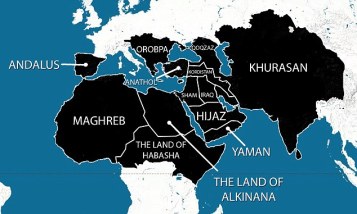N. N. Vohra
21 Jul 2014
THE most urgent need for the Central Government is to secure appropriate understanding with the states for finalising an appropriate national security policy and putting in place a modern, fully coordinated security-management system which can effectively negate any arising challenge to the territorial security, unity and integrity of India. It would be useful, at the very outset, to state that, in simple language, the term “national security” could be defined to comprise external security, which relates to safeguarding the country against war and external aggression, and internal security which relates to the maintenance of public order and normalcy within the country.
External issues
The first generation of India's security analysts, who focused attention almost entirely on issues relating to external security, had found it convenient to distinguish issues relating to external and internal security. However, such a segregated approach is no longer feasible, particularly after the advent of terrorism which has introduced extremely frightening dimensions to the internal security environment. I would go further to say that issues of internal and external security management have been inextricably intertwined ever since Pakistan launched a proxy war in Jammu and Kashmir in early 1990 and Pak-based jihadi terrorists started establishing networks in our country.
Geopolitical developments
Our national security interests have continued to be influenced and affected by geo-political developments in our region and far beyond. In the context of the experience gained, it is extremely important that, besides all necessary steps being taken for safeguarding India's territorial security and establishing a very strong machinery to counter terrorism, close attention is also paid for effectively securing other important arenas, particularly those relating to food, water, environment and ecology, science and technology, energy, nuclear power, economy, cyber security, et al.
While evolving a holistic approach towards national security management, it would be relevant to keep in mind that our country comprises an immense cultural and geographical diversity and our people, nearly a billion and a quarter today, represent multi-religious, multi-lingual and multi-cultural societies whose traditions, customs and socio-religious sensitivities are rooted in thousands of years of recorded history. It is equally important to remember that in our vast and unfettered democracy the unhindered interplay of socio-cultural traditions and religious practices carries the potential of generating discords and disagreements which may lead to serious communal disturbances, particularly when adversary elements from across our borders join the fray.
While it may appear somewhat trite to cite school-level statistics, our security- management apparatus shall need to reckon that we have over 15,000 km of land borders, a coastline of about 7,500 km, over 600 island territories and an Exclusive Economic Zone (EEZ) of about 25 lakh sq km. These awesome parameters and, besides, the extremely difficult geographical and climatic conditions which obtain in the various regions of our vast country present serious challenges to our security forces who maintain a constant vigil on our land, sea and air frontiers.
While it would not be feasible to recount the varied security challenges which India has faced in the decades gone by, it could be stated that the more serious problems in the recent years have emanated from Pakistan's continuing proxy war in Jammu and Kashmir; jihadi terrorism, which has been progressively spreading its reach; the destructive activities which the Left-wing extremist groups have been carrying out for decades now; the serious unrest created by the still active insurgencies in the North-East region; and incidents of serious communal violence which have been erupting in the various states, from time to time. Mention must also be made of the steadily growing activities of the Indian Mujahideen, a terror group which has its roots in Pakistan. Another phenomenon, relatively more recent, relates to the emergence of certain radical counter-groups which have been organised with the primary objective of countering the jihadi terror networks. It needs being noted that the activities of such counter-groups have the potential of spreading disharmony and divisiveness which could generate widespread communal violence and result in irreparably damaging the secular fabric of our democracy.















